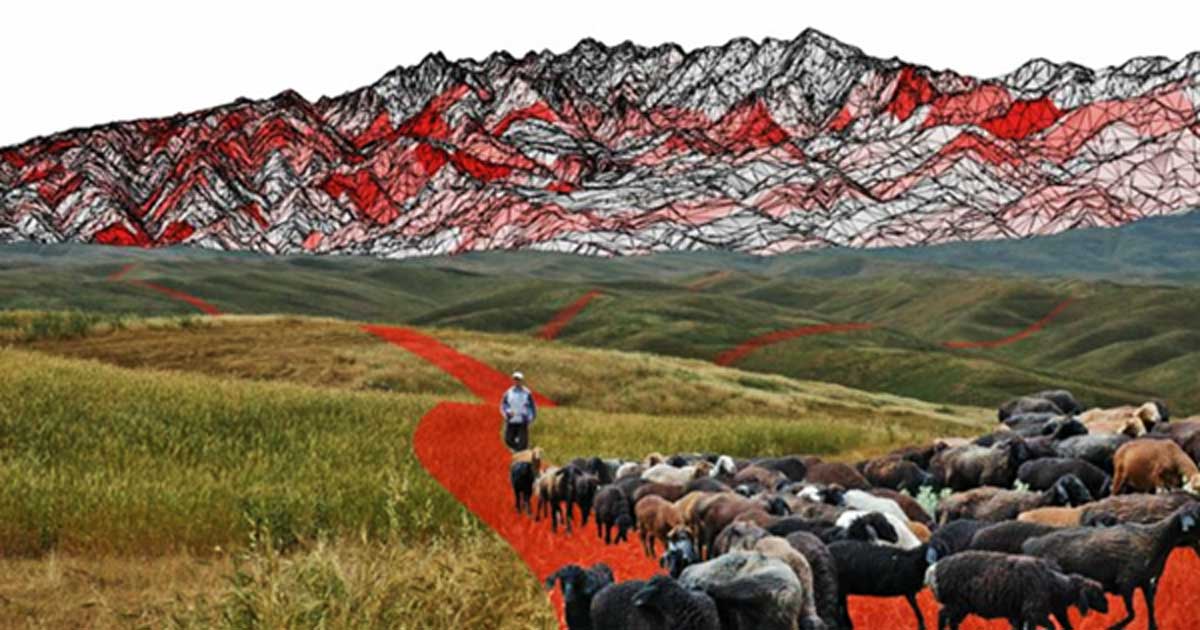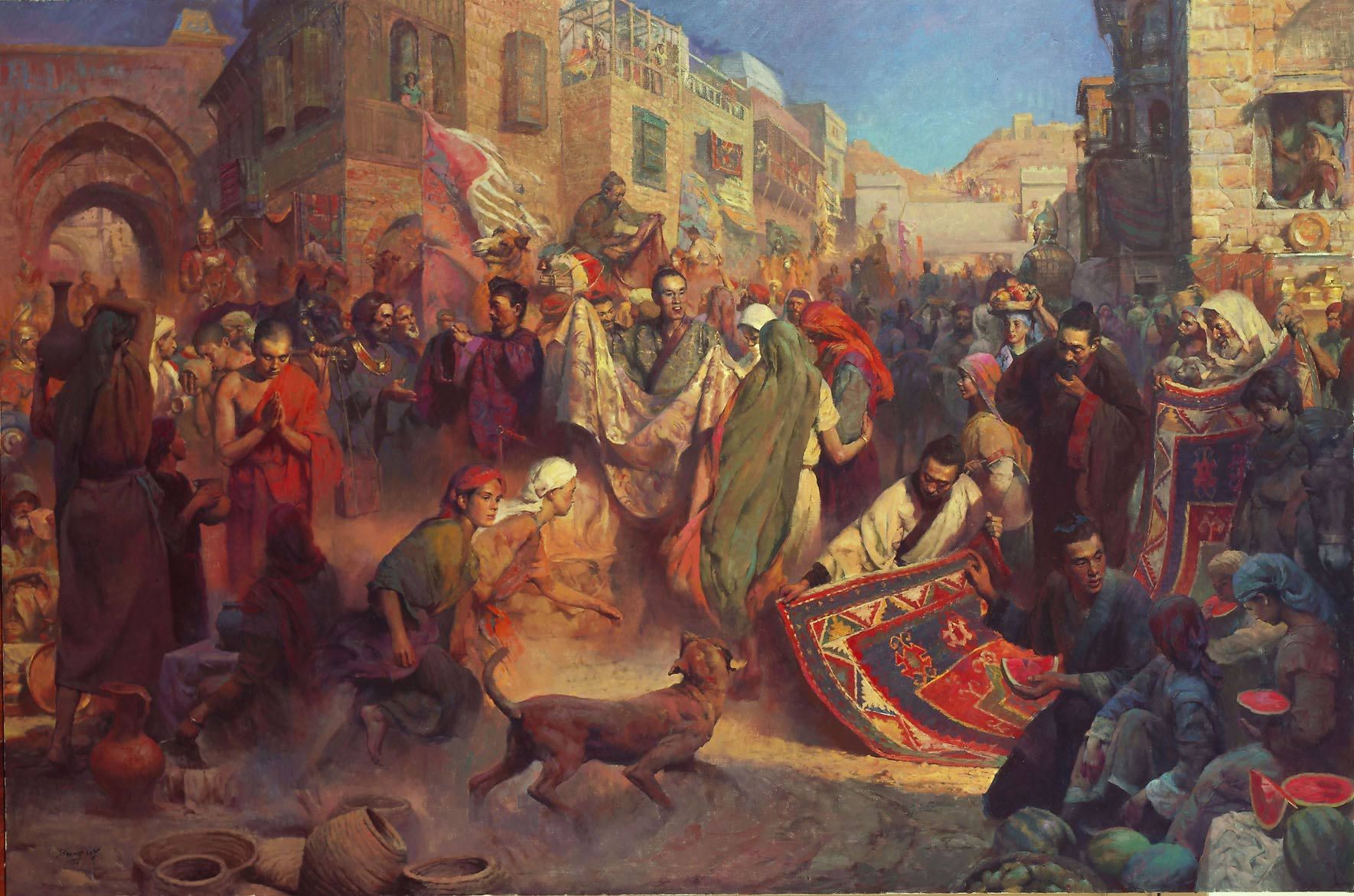.gif)
Source: http://www.silkroutes.net/orient/mapssilkroutestrade.htm
The only hoverable cities are the notable cities. They are mentioned below:
- Rome
- Baghdad
- Kashgar
- Xi'An
- Samarkand
- Merv
- Alexandria
Who Formed The Silk Route?
Chinese Nomads. The Chinese Emperor wanted to export Silk to other nations as well as goods and ideas, so he sent them via nomadic tribes who would visit neighbouring nations, upto how far they go. Prior to the Sik Route, nations were isolated 'Due to Geographical Boundaries and the Fear of the Unknown'- As said by the SEEKER media group. Through the nomadic tribes, China & Central Asia had started to share goods and ideas. That moved onto Europe, all the way to Rome, even though the Nomadic Tribes haven't gone that far as they would only travel via land.The Nomadic Tribes formed the Silk Route, through their travels throughout the world on land. They've formed the main highway which can be seen on the map above in orange going as far as the Middle East on land. Following that, maritime routes (Routes on Water, on the map above see the blue lines/routes) were formed and had stretched the route all the way to Rome.
Modes of Travel and the Impact of the Route
The main modes of travel on the route, as indicated on the map above is through Sea and Land. Through ships on sea, but on land, some travelled on foot with pack animals, or on horseback.The route had a great impact on society then and the effects are still present today. The impact of the route was one of the grandest forms of GLOBALIZATION.
Medicinal practices were traded, the biodiversity of different geological nations were altered (With all of the new seeds of crops), educational practices were traded, the economics of the world boosted from many isolated markets to one grand market, and most importantly, the world's culture has changed drastically. Everyone's lives have been impacted by the Silk Route, some of the objects present in your home are due to the Silk Route. It had interconnected the world economically and culturally, to the extent that the effects of the exchange still stay until today. For instance, the book in your house is due to globalization, if you live in the Eastern side of the world, the fork and spoon in your household is due to the cultural exchange. So, it could be concluded that the Silk Route had a grand impact that had globalized the world. Because imagine, what would your life be like, if you didn't have objects which doesn't originate from your country. It would be very hard, wouldn't it?

